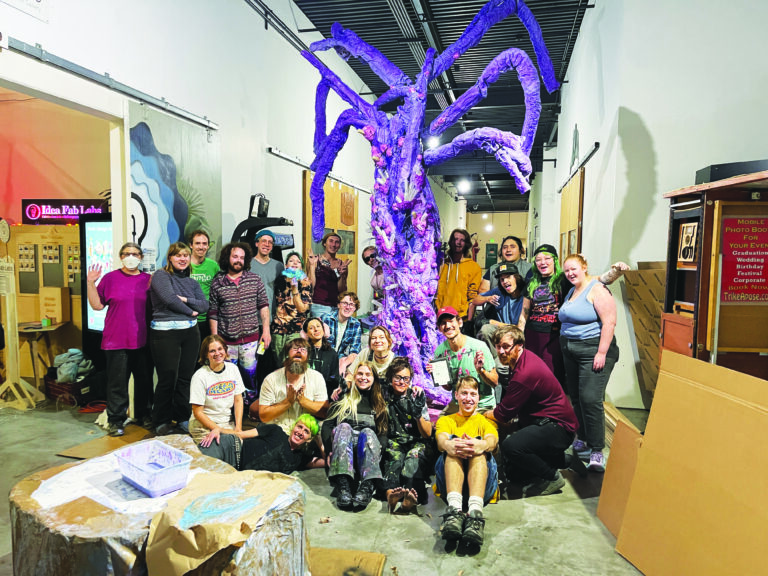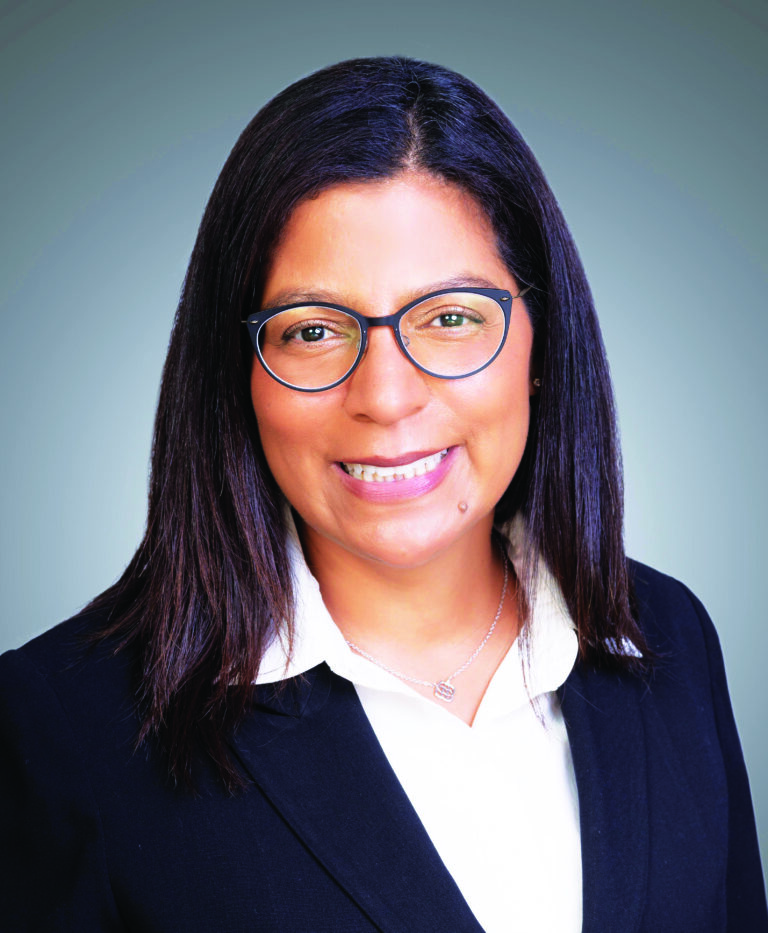Frequency: noun. “The rate at which something occurs or is repeated over a particular period of time or in a given sample.” With this definition in mind, it’s no wonder the Santa Cruz Museum of Art and History (MAH) decided to rebrand the GLOW: A FESTIVAL OF FIRE AND LIGHT to FREQUENCY: A FESTIVAL OF LIGHT, SOUND AND DIGITAL CULTURE.
After all, the immersive and interactive exhibit of light and sound occurs at a frequency of every other year–down from (almost) yearly when it was GLOW. Yet, there’s also another reason for the name switch up.
“We’ve obviously had a lot of challenges with fire in this part of the world,” explains MAH Executive Director, Robb Woulfe.
“So we decided to look at it differently and explore digital art. Which gave us the opportunity to look at a variety of different artists in the digital world.”
The enveloping exhibit runs from 5pm to 10pm on September 21 through the 24th. It’s billed as “mostly” free because while many of the sculptures and exhibits are outside, the ones inside the museum require an admittance fee of $10 for adults and $5 for children 12 and under.
But that small amount is well worth it.
“It’s eye and ear candy!” Woulfe says.
Part installation, part immersive experience, FREQUENCY spins participants in a kaleidoscope of different realities. There’s even a silent disco by HUSHconcerts from 7pm-10pm in the sculpture garden for anyone needing a well deserved dance break.
HYBYCOZO–a collaborative studio from artists Yelena Filipchuck and Serge Beaulieu–will exhibit two installations, “Dodi” a laser-cut steel geometric light sculpture and “Point of Light” which celebrates form and pattern.
Orlosky Studios–run by Andrea and Kevin Orlosky out of Richmond, Virginia–blends poetry, sculpture and light for their “Poems of Positivity” installation.
Then there’s Tom and Lien Dekyvere who will exhibit two installations, ”Rhizome” and “IVY2.0.” The first is a massive web of intertwined luminescent strings that appear similar to the laser security beams guarding the largest diamond in a heist movie. “IVY2.0” builds a futuristic creeping vine made out of old circuit boards.
The Dekyveres also have an immersive experience called “Elantia, Stream” described as “An installation of e-waste, moss and mirrors.”
“The one returning artist is Aron Altmark, a local artist,” Woulfe says. “He runs a company called Visual Endeavors and he’ll be doing an immersive, projection mapping project.”
Aptly named, “Spectral Passage” this piece looks equally haunting as it does stunning, and is projected in the museum’s loading tunnel on Front Street for extra ambiance.
FREQUENCY first timers–locally based Liminal Space Collective–debuts the “Crystal Note Grove,” an imaginative world built for sanctuary.
“I liken this to playing a video game and you’re in a safe zone where you can heal,” explains artist, Wendy Frances.
“Crystal Note Gove” is based on a previous installation by Frances and her fellow artists at the now defunct Circle Church last February. This installation will have alien trees, psychedelic plants and even a six-foot-tall creature named Lumin at the MAH’s entrance.
“We came up with a whole story about both worlds colliding right there,” says Weston Mossman, one of the Liminal Space founders.
“From outside people just see a box that’s the MAH but the people inside will see the trees that are from our planet.”
According to Frances, the collective has about 200 people but for this project they are using 50 people across 12 teams.
“There’s an electronics team that are creating crazy light designs,” Frances divulges. “And we’ve laser cut some large crystals that will light up and glow under the tree. It’s going to be nuts!”
FREQUENCY goers will also get a sneak peek at the upcoming “The Last Chinatown”, set to open in 2024.
“It’s a reliving of what it would be like to walk through the last Chinatown right here in Santa Cruz,” Woulfe says, noting the exact location of the area is right outside the MAH along the San Lorenzo River Levee.
The project is the brainchild of UC Santa Cruz Film & Digital Media Assistant Professor, Susana Ruiz, Emmy Award nominated director, producer, Huy Truong, and UCSC LIterature professor, Karen Tei Yamashita. It’s an augmented reality, where patrons can use their phones to “see” through history to Santa Cruz’s last Chinatown, which was flooded and destroyed by the San Lorenzo River on Christmas Eve 1955. The digital monument will show what it looked like, how people lived and include a fictionalized story based on historical evidence.
“There’s the theatrical narrative written by K.T. Yamashita and then there’s the documentary side,” Truong explains, adding the FREQUENCY sneak peek will only feature 15 minutes of the full documentary.
“It’s a complete augmented reality experience through the lens of a photographer who grew up in Santa Cruz in the early 1900’s by the name of George Lee .”
Longtime Santa Cruzans might be aware of George Lee and his nephew, George Ow Jr. The latter of whom has spent his life keeping the memory and history of Santa Cruz’s Chinatown alive, and was an instrumental part in installing the Chinatown Bridge memorial.
“The Last Chinatown” is the result of five years of work and received a $150,000 boost in 2022 when Ruiz and Truong were bestowed the Hewlett 50 Arts Commision grant from the William and Flora Hewlett Foundation.
“It became very inspiring for us,” Ruiz says. “How can this tiny, California city not have any remnants of a Chinatown? Or no contemporary Asian grocery stores? That became interesting for us.”
“It’s a project we actually commissioned and it will be set up in our garden room,” Woulfe says. “We’ve received a lot of questions about it so we wanted people at Frequency to see how that project is coming together.”
Frequency: A Festival of Light, Sound & Digital Culture. Sept. 21-24, 5pm-10pm. Mostly free. $10adult/$5children admission to Museum of Art And History. 705 Front St., Santa Cruz. www.santacruzmah.org/frequency



























